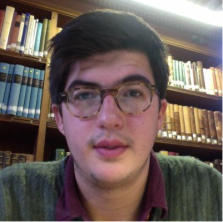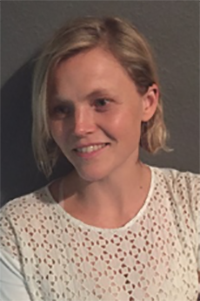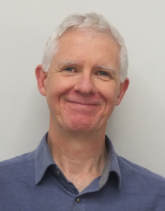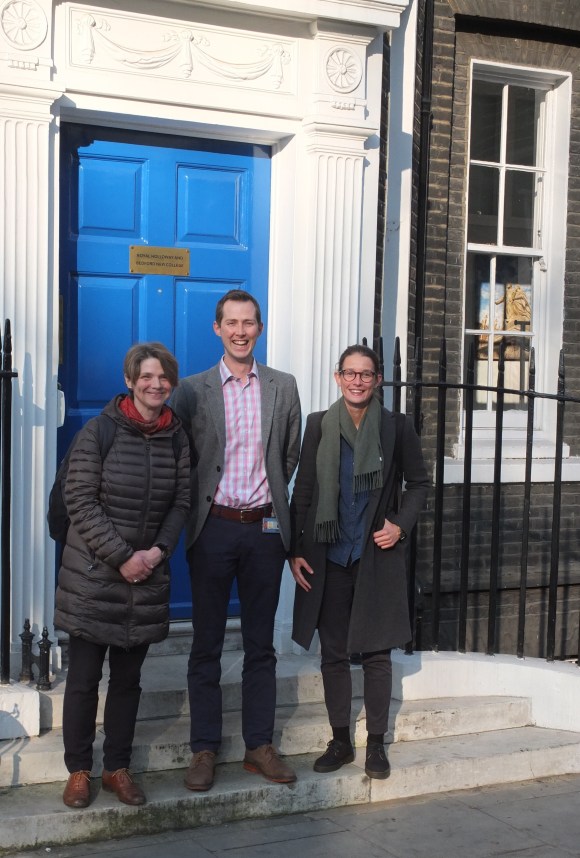 Warsaw University, Old Library
Warsaw University, Old Library
The triennial International Conference of Historical Geographers is a truly international gathering of scholars whose interests lie at the intersection of the temporal and the spatial. This year the conference, which attracted participants from 39 countries, was held at the University of Warsaw, Poland, from July 15-20. To give some idea of the scale of ICHG 2018, there were 106 thematic sessions giving 365 papers on subjects ranging from the medieval to the digital, from the Crusades to the Cold War, and from mining to memes.
 Institute of History, Polish Academy of Sciences, Market Place, Old Town, Warsaw
Institute of History, Polish Academy of Sciences, Market Place, Old Town, Warsaw
The conference was launched on the evening of Sunday July 15 with the keynote address given by our own Felix Driver in the picturesque setting of the Institute of History of the Polish Academy of Sciences, in the Old Town. Warsaw’s Old Town has itself a remarkable historical geography: first established in the 13th century, much of it was destroyed by bombing in the Second World War and meticulously rebuilt using, wherever possible, the original materials. Now a UNESCO World Heritage Site, it can be seen as a symbol both of Polish resilience and nationhood. Felix spoke on the theme of “Biography and geography: from the margins to the centre,” in which he outlined the advantages of adopting a biographical approach to the writing of historical geography.
The rest of the week took place in the elegant former library building of Warsaw University, an institution which dates from 1816. There we were generously fed and watered four times a day, and what a difference that can make to overall morale, motivation and energy levels! A series of daily plenary talks began on Monday July 16 with Karen Morin’s sense- and thought-provoking “Prisoners and Animals: An Historical Carceral Geography,” an exploration of the linkages between human and non-human incarceration spaces and practices. Another highlight of Day One was the roundtable discussion “Maps and Stories: What does the future look like for historical geographers?” chaired by former Landscape Surgeon David Lambert. From Miles Ogborn’s signal discussion of the limitations of current digital formats deployed in the publication of historical geographies (“Trapped in PDF world”), to Maria Lane’s advocacy of “slow scholarship,” David Bodenhamer’s revelations on the potential of “deep maps,” Jo Norcup’s call for greater intersectionality, and concluded by David Lambert’s consideration of the future for “exhibitionary geographies,” alternative approaches to our disciplinary practice were offered up for further discussion and consideration.
Our Kew session—“Biocultural Collections in Circulation”— took place on the afternoon of the same day. Chaired by Felix Driver, with Michael Bravo as the discussant, the three papers shared the common themes of Kew Gardens’ collections and object circulation, but beyond that were significantly different in their respective foci: Keith Alcorn began with his analysis of plant and seed circulation from Kew over the extended period from the “Banksian era” to the state-funded Kew of the mid-nineteenth century; Felix and I, reflecting the research conducted in the course of the “Mobile Museum” research project, spoke of the motives, modes and meanings of distributions of objects from Kew’s Museum of Economic Botany in the 19th and 20th centuries; and Luciana Martins concluded the session with reflections on the ethnobotanical collecting practices of explorer Richard Spruce, and on the relevance of his legacy for present-day inhabitants of the Rio Negro region of Brazil. We are thankful to Michael Bravo for his comments, which we all found helpful for the further development of our papers, and to the audience for their active interest and questions.
Echoing the theme of our session, the following day saw the double session “Mobility and the archive,” chaired by David Beckingham. And the mobility of knowledge also emerged as a theme in Ruth Craggs’ and Hannah Neate’s session later in the week, “Global Histories of Geography 1930-1990,” in which we were invited to consider the question, “How do we globalise histories of geography?”
 POLIN, Museum of the History of Polish Jews, Warsaw
POLIN, Museum of the History of Polish Jews, Warsaw
The programme of talks and papers was intersected mid-week by a day of field trips. My choice was the Warsaw Jewish History Tour beginning at the Museum of the History of Polish Jews, a museum opened in 2013 and curated by Barbara Kirschenblatt-Gimlett. The museum celebrates 1,000 years of Jewish history in Poland and commemorates the injustices perpetrated on the Jewish community on Polish soil. I think we all had a greater understanding of both by the day’s end.
After a stimulating week of listening, thinking and talking, the conference ended on the announcement that the next conference, in 2021, will take place in Rio de Janeiro. Até no Rio!
Caroline Cornish








 Landscape Surgery’s current theme of ‘communicating research’ took a look at research exhibitions, and revealed ways in which exhibitions can be far more than valuable forms of communication. The session was stimulated by three panelists: current surgeon and 3rd year PhD student n the department Katherine Stansfeld, ex-surgeon and PhD student and now
Landscape Surgery’s current theme of ‘communicating research’ took a look at research exhibitions, and revealed ways in which exhibitions can be far more than valuable forms of communication. The session was stimulated by three panelists: current surgeon and 3rd year PhD student n the department Katherine Stansfeld, ex-surgeon and PhD student and now 


